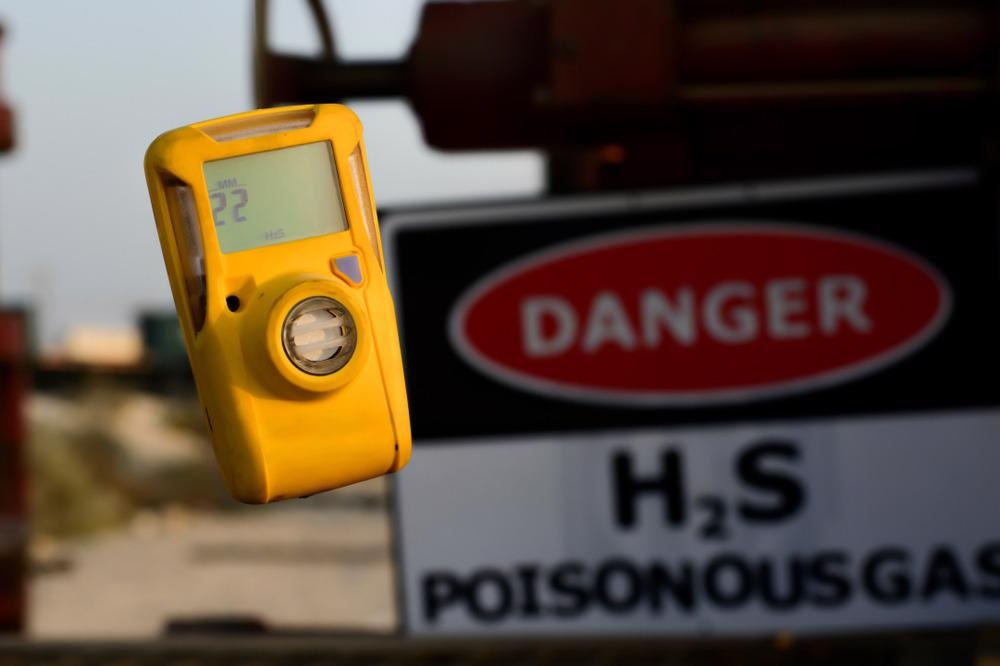Controlling environmental gas pollution has become critically important as poor air quality has significant health and economic impacts on modern society. Novel gas sensing devices based on nanostructured thin films are promising to achieve better sensitivity, selectivity, and faster response times.

Image Credit: P.V.R.Murty/Shutterstock.com
Several analytical techniques for gas mixture analysis, such as mass spectroscopy, infrared spectroscopy, and laser absorption spectroscopy, can accurately detect gaseous chemical pollutants. However, the use of conventional analytical instruments is time-consuming, expensive, and often impossible in remote places and outdoor conditions.
Compact gas sensors have attracted much interest in the last decades as detectors of many pollutants, such as NOX, SOX, HCl, CO2, volatile organic compounds (VOCs), and fluorocarbons, originating from natural sources and industrial manufacturing. Rapid real-time detection of harmful and polluting gasses has become of great importance in the fields of environmental control, chemical manufacturing, pharmaceuticals, medical diagnostics, and many others.
Currently, semiconducting metal oxide thin films represent one of the most widely adopted types of gas sensors. Metal oxide thin films emerged early in gas sensing due to their simplicity, low manufacturing cost, ease of use, and ability to detect a large variety of gases.
The presence of the pollutant gas can be detected by changes in a range of physical properties of the gas-sensing material, such as conductivity, capacitance, work function, mass, optical characteristics, or energy released during the gas/solid interaction. In addition, the small thickness of the gas sensing layer (<1 μm) and its surface morphology greatly enhance the gas sensing performance. However, most thin film gas sensors suffer from drawbacks associated with their response and recovery times and insufficiently high sensitivity.
Nanostructured Metal Oxides for Gas Sensor Applications
In recent years, the rapid development of nanotechnology made it possible to rectify some of the disadvantages of thin film gas sensor devices.
The ability to manufacture semiconducting nanostructures, such as metal oxide nanowires, nanoribbons, and nanoparticles, on an industrial scale permitted the creation of nanostructured metal oxide thin film gas sensors with very high sensitivity. Enhanced performance results from the significantly increased surface area of the device, leading to improved adsorption of gas species on the surface.
Besides, the subsequent catalytic activity with the adsorbed gas molecules enhances sensing performance and thus reduces response time compared to the conventional gas sensors. However, gas sensors that utilize nanostructured metal oxide thin films are more expensive than bulk material gas sensors due to the increased fabrication cost.
Nanopatterned Conductive Polymers for Tunable Gas Sensors
Recently, polymer-based gas sensors have been developed as a result of advances in organic electronics. By nanopatterning of conductive polymers, such as polyaniline and polypyrrole, on an insulating substrate in a configuration similar to an organic field-effect transistor, various organic compounds, including trinitrotoluene, and other nitroaromatic explosives, were detected at very low concentrations.
The sensitivity of the polymer-based gas sensors depends on the nanostructure of the sensing area. The addition of metal oxides nanoparticles, graphene flakes, or carbon nanotubes enabled tunable selectivity of the sensors.
Carbon-Based Nanomaterials as a Practical Solution to High Sensitivity Gas Sensing
Pristine graphene is an atom-thick carbon material that exhibits semimetallic electronic properties with zero bandgaps, which usually requires further surface functionalization to enhance the detection of gaseous molecules.
Nevertheless, graphene derivatives, such as functionalized graphene oxide and carbon nanotubes, show great promise for gas detection due to their extremely high surface-to-volume ratio, rendering the whole atomic-thin layer subjected to the gaseous molecules. In addition, the chemically-modified surface of the functionalized graphene oxide enhances the absorption of gas molecules and improves the transfer towards the sensor's electrodes.
Future Challenges for Gas Sensor Performance
Despite the recent progress, several challenges prevent the industry from fully exploiting the advantages of nanostructured thin films. To ensure consistent and repeatable gas sensor characteristics, better control of the nanostructure fabrication is needed in terms of thickness, composition, and morphology.
These aspects are particularly important for the graphene-based gas sensors, as any manufacturing inconsistencies strongly affect the device's temperature stability, selectivity, response and recovery times, repeatability, and durability. Large-scale commercial production of such nanostructured gas sensors also requires the development of more cost-effective nanofabrication processes.
Continue reading: Improved Yields of Clean, Oxide Thin Films with Greater Dimensions.
References and Further Reading
N. Sureshkumar and A. Dutta (2021) Environmental Gas Sensors Based on Nanostructured Thin Films. In Multilayer Thin Films - Versatile Applications for Materials Engineering, S. Basu (Ed.), IntechOpen. Available at: https://doi.org/10.5772/intechopen.89745
N. K. Chowdhury and B. Bhowmik (2021) Micro/nanostructured gas sensors: the physics behind the nanostructure growth, sensing and selectivity mechanisms. Nanoscale Adv., 3, 73-93. Available at: https://doi.org/10.1039/D0NA00552E
S. J. Toala and W. C. Trogler (2006) Polymer sensors for nitroaromatic explosives detection. J. Mater. Chem., 16, 2871-2883. Available at: https://doi.org/10.1039/B517953J
Choi, J. H., et al. (2020) Graphene-Based Gas Sensors with High Sensitivity and Minimal Sensor-to-Sensor Variation. ACS Applied Nano Materials, 3 (3), 2257-2265. Available at: https://doi.org/10.1021/acsanm.9b02378
Xie, T., et al. (2021) Understanding and optimization of graphene gas sensors. Appl. Phys. Lett. 119, 013104. Available at: https://doi.org/10.1063/5.0057066
Disclaimer: The views expressed here are those of the author expressed in their private capacity and do not necessarily represent the views of AZoM.com Limited T/A AZoNetwork the owner and operator of this website. This disclaimer forms part of the Terms and conditions of use of this website.